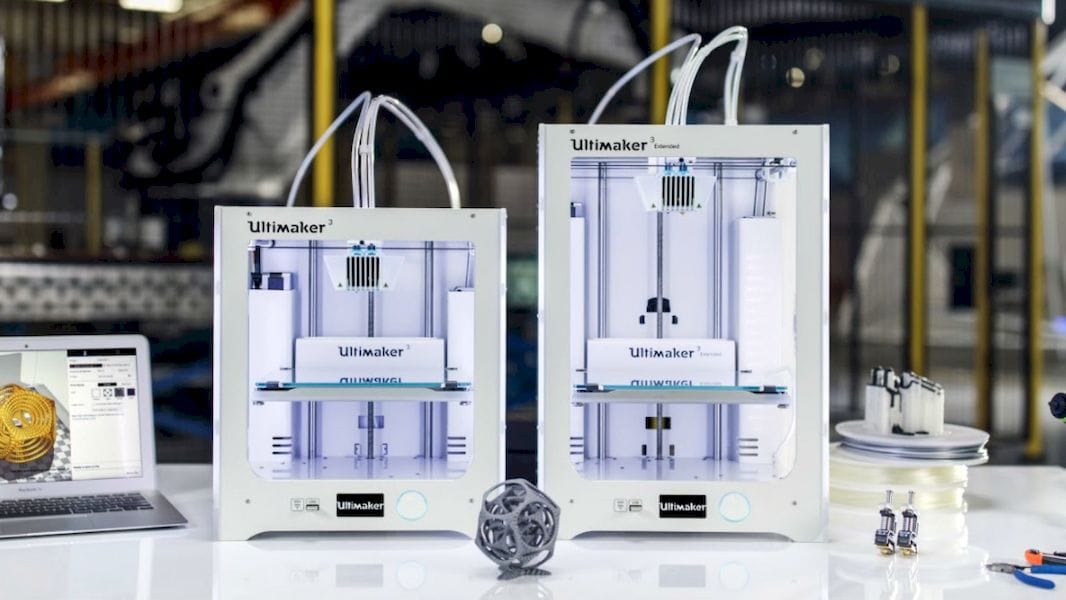
Call me surprised, but Ultimaker is moving ahead rapidly.
The company embarked on a tricky strategic change a couple of years ago and now it seems to be paying off with a blockbuster announcement from Bosch. The giant manufacturer has agreed to equip their worldwide offices with Ultimaker 3D printers. This could amount of thousands of machines, creating massive market momentum for Ultimaker.
The specifics of the deal are explained by Ultimaker:
Robert Bosch GmbH, the leading global supplier of technology and services from Germany, will invest on a global scale in Ultimaker 3 Extended printers. After comparing several desktop 3D printers, the Additive Manufacturing department of Bosch selected Ultimaker as the most reliable, easy-to-use and professional machine. The printers will now be used in different locations across Germany, Hungary, China, India, the United States and Mexico for printing prototypes, tooling, jigs and fixtures—meant to boost innovation while cutting manufacturing and design costs.
I am very surprised about this because it seems to be a kind of short-circuit for their intended strategy.
If you recall, they announced the Ultimaker 3 some months ago, a desktop machine with a stealth feature.
Well, the feature was that the machines could, on their own, network to each other to coordinate activities. One machine acts as the “master” and the others become “slaves”. The impromptu network is then operated as a single utility through their Cura Connect software.
While this is obviously a useful feature, it had a subtly different, far deeper purpose: taking over 3D printing in larger corporations.
If you haven’t worked in a large company, let me explain a phenomenon that is universal: No one wants to deal with the IT department. This is because the IT department is almost always viewed as a “cost center”, whose activities must be kept to a minimum. In reality, IT is very often the heart of a business, even if executives don’t actually understand that. Nevertheless, IT departments institute control regimes that drive down costs, but often dramatically reduce end-user flexibility, performance, quality of work and much more. It’s a very common organizational flaw.
In companies with this scenario, adding a new, “Non-IT-approved” device is highly problematic. You would not even consider the notion of calling the IT department to “hook up your 3D printer to the network”. It just would not happen in most companies.
This is why Ultimaker 3 is self-networking. End users simply buy them and install them.
They Do Not Need To Call The IT Department.
Thus, Ultimaker’s strategy was to allow Ultimaker 3’s to gradually leak into corporations, who eventually would have to recognize that they really should be supported by the IT department after all simply due to numbers.
This is the identical strategy used by Microsoft in its very early days when promoting Word and Excel. People bought the software on their own and brought it into work where they used it against IT department rules.
And where is Microsoft now?
And where will Ultimaker be in a few years?
I expected this scenario to play out over multiple years, but suddenly Bosch announced a deal to adopt Ultimaker 3s en masse. Great news for Ultimaker, obviously, but it’s also a strong statement for supporting the device in corporations.
Look out, IT departments everywhere.
Via Ultimaker

